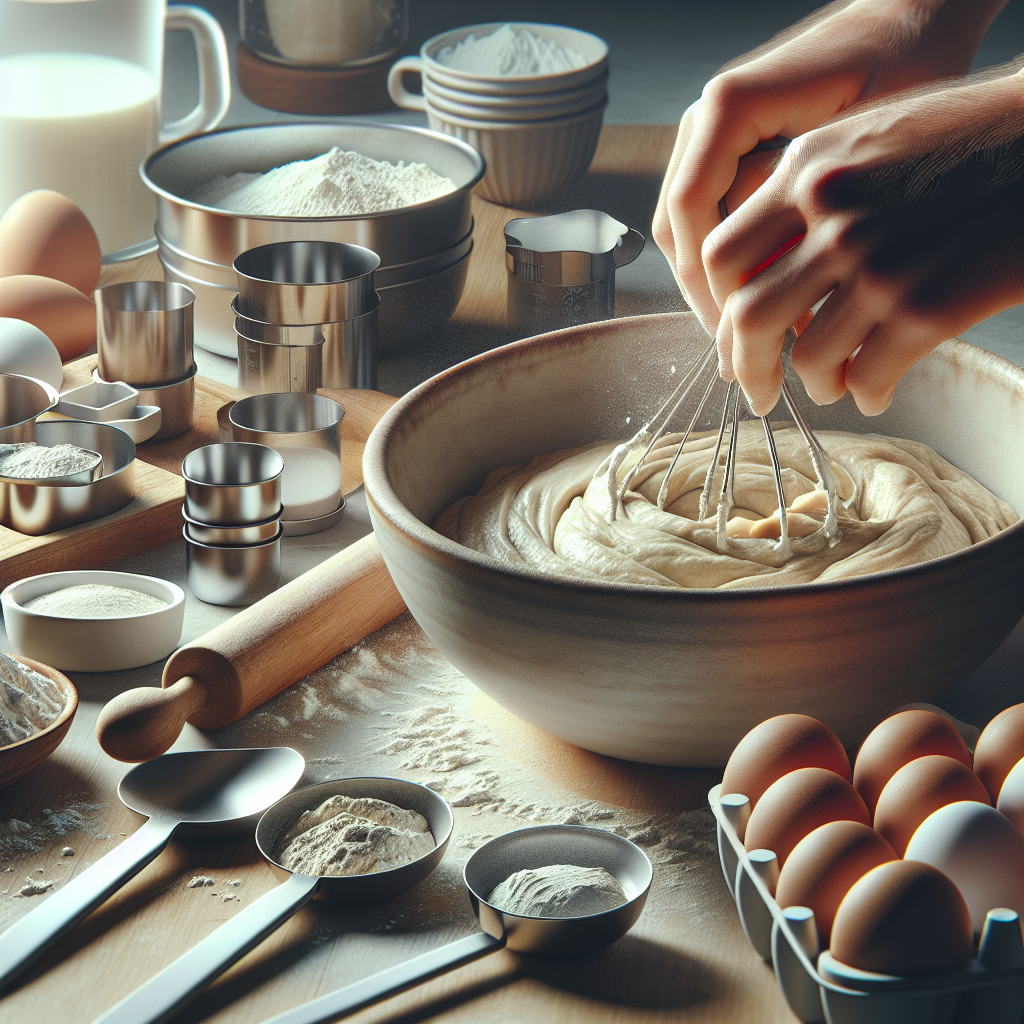In the world of baking, achieving the perfect texture and rise in your baked goods can be an elusive goal. While many factors contribute to a successful outcome, one of the most critical steps is proper mixing. Whether you’re creating a simple cake, bread, or cookies, understanding the role of mixing can make all the difference in your final product.
The Science Behind Mixing
Baking is as much a science as it is an art. When ingredients are mixed, several key chemical reactions occur that affect the texture and rise of the final product:
-
Incorporation of Air: Proper mixing introduces air into the batter or dough, which is essential for leavening. This air expands during baking, contributing to the rise of your baked goods. Insufficient mixing can result in dense textures, as there won’t be enough air pockets to lift the mixture.
-
Gluten Development: In recipes containing flour, such as bread or cakes, mixing plays a critical role in gluten development. Gluten, a protein network formed when flour is hydrated and manipulated, gives structure to baked goods. Over-mixing can lead to a tough texture, while under-mixing may result in weak gluten formation, causing cakes to collapse.
- Dissolving and Hydrating Ingredients: Proper mixing ensures that all dry ingredients are evenly distributed throughout the wet ingredients, allowing for proper hydration and dissolution. This is crucial for achieving a uniform texture. Undermixed batters may contain pockets of dry or unmixed flour, leading to inconsistencies.
Techniques for Effective Mixing
1. Know Your Ingredients
Different ingredients require different mixing methods. For instance, butter and sugar should be creamed together until light and fluffy to incorporate air, while dry ingredients need to be combined separately before being added to wet ingredients. Understanding how each component reacts during mixing is vital.
2. Mixing Methods
- Creaming: This method is commonly used for cakes and cookies. It involves beating butter and sugar together to create a light, airy mixture.
- Folding: Gentle and careful, folding is essential for maintaining airiness, particularly in delicate batters like soufflés or meringues. It should be used to mix in whipped egg whites or whipped cream without deflating them.
- Kneading: For yeast breads, kneading is critical as it develops gluten. This process should be done until the dough is smooth and elastic.
3. Proper Tools
Using the right tools can enhance your mixing effectiveness. A stand mixer may save time and power, while a hand mixer gives you more control. Likewise, wooden spoons or spatulas are great for folding ingredients carefully.
4. Timing Matters
Each mixing technique comes with its recommended time. Over-mixing can lead to tough textures, while under-mixing can result in inconsistency. Knowing when to stop is just as important as knowing how to mix!
Common Mistakes to Avoid
-
Ignoring the Order of Ingredients: Mixing ingredients in the wrong order can lead to uneven texture. Always follow the recipe guidelines to ensure the best outcome.
-
Over or Under-Mixing: It’s crucial to find a balance. Regularly check your batter’s consistency and make adjustments as needed.
- Skimping on Mixing Time: While it’s tempting to rush, giving your batter the proper time will yield better results.
Conclusion
Proper mixing is one of the unsung heroes of effective baking, directly impacting the texture and rise of your final product. By understanding the science behind mixing and employing the right techniques, you can elevate your baking game. Whether you’re a novice baker or an experienced chef, mastering this fundamental skill will lead to consistently delightful results, transforming your kitchen into a haven of homemade treats. Happy baking!

